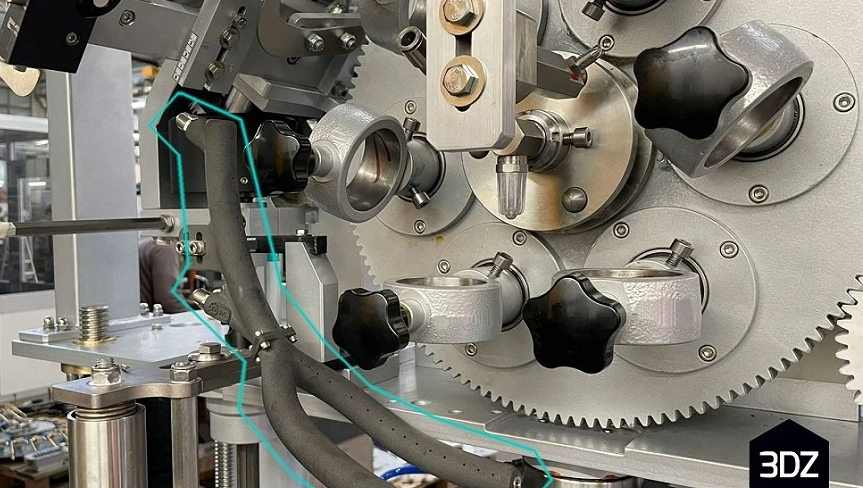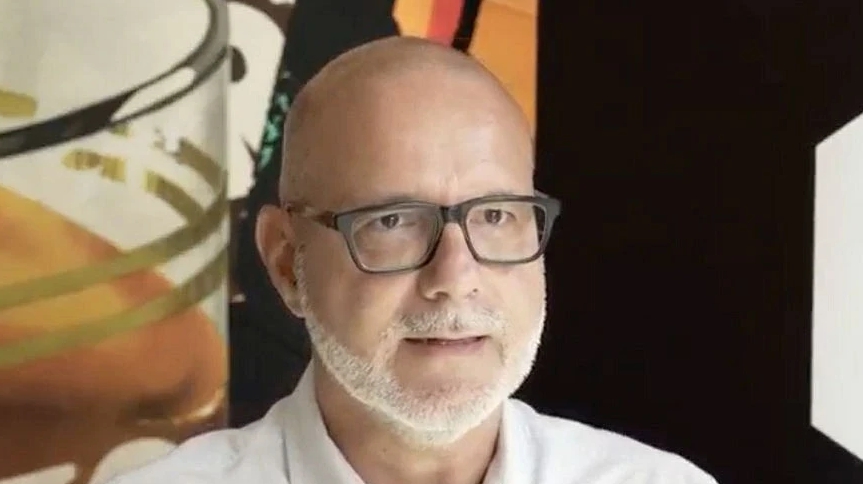Toast is easier thanks to 3D printing – Robino & Galandrino
2024-05-03
The complex elements of wine bottling machinery are now manufactured in 3D with fewer components and costs, as well as having reduced weights.
The company
Robino & Galandrino was founded in Canelli, the birthplace of traditional Italian sparkling wine, in the Asti region. The company has been able to grow alongside the largest national wine production companies in the area and has successfully established itself as a manufacturer of bottling machinery both in Italy and abroad, supplying several markets around the world.
For Robino & Galandrino, the constant challenge of providing the best response to each client’s problem has been fundamental, always suggesting new technological solutions and responding punctually, effectively and flexibly to the changing needs of the market.

The need
How to manufacture components with very complex shapes?
To automate wine production processes, Robino & Galandrino builds machines for the automatic dispensing, capping and tying of sparkling wine and champagne bottles.
Because bottles and caps have to be carefully matched, the automatic machines that produce them must be able to coordinate the movements of the individual components along the line. This requires articulated movements that force Robino & Galandrino engineers to investigate component designs with complex shapes.
With traditional machine tools and machining centers it is not possible to easily obtain these geometries, so some machining operations involve multiple steps to produce a finished part.
In general, parts are made up of several elements and, therefore, also present assembly problems, which lengthens production times and considerably increases costs.
- Reduce time: Find a system to drastically reduce the design and production time of both prototypes and finished individual elements used directly in the operation of your machines.
- Reduce the number of components: Reduce the number of stored components as much as possible to shorten the delivery time of a part and prevent it from becoming obsolete. This is a fundamental need, shared by many manufacturing or automated machinery companies.
- Reduce weight: Eliminate the limitations of mechanical design to have parts with reduced weights. Robino & Galandrino machines are subject to long work cycles and this dynamic forces designers to manufacture parts with special shapes to reduce their weight.
The solution
3D printing to simplify and lighten
A couple of years ago, Robino & Galandrino began to consider the possibility of incorporating into the design and production flow of its machinery alternative technologies to the traditional machining processes used until then, including additive manufacturing. At that point, he turned to 3DZ, a leading distributor of various 3D printing technologies.
In order to satisfy both the need to easily produce functional components with complex shapes and to obtain high mechanical performance, 3DZ recommended two complementary 3D printers to Robino & Galandrino. It currently has an SLS plastic powder printer in its fleet Fuse 1+ 30W from Formlabs and a Mark Two filament printer from Markforged.
First, it manufactured prototypes of the components with resistant materials for functional testing and, before long, began using the same printers for the production of final parts. These 3D printed parts were inserted directly into the machines.
Given the continued use of 3D printed parts, a division dedicated to the design and production of parts using additive manufacturing technologies was created in the company.
The introduction of 3D printing in the different phases of the company responded to all the needs previously identified.
“We started redesigning elements without worrying that the shapes were too complex and unworkable or cost too much. It was possible to manufacture components that previously consisted of several elements, in a single piece. As it was no longer necessary to have stock, we were much faster in sourcing components, even with variants requested by customers,” said Flavio Clarillo, technical director of Robino & Galandrino.
The advantages of 3D printing: some examples of elements made
Mario Bianco, technical director of the new 3D printing department, shares details of some of the parts that are assembled on various machines produced by Robino & Galandrino, illustrating the advantages of the new production methods for each part.
Reduction in the number of components and optimization of the space occupied
Cuff retractor
Piece dedicated to widening and arranging a thermoplastic film on the bottles throughout their journey inside the machine.

BEFORE this piece was made up of 2 separate elements: the lower part obtained from a reinforcing bar and the upper part obtained from a plate. These two components had to be assembled by machining and fitting at the time of assembly because the machine tool could not handle the complex geometries to properly form the thermoplastic film.
NOW: The advantage of using 3D printers for this part is that it is possible to create complex geometries in a single element that does the same work as the two assembled parts, optimizing the overall dimensions.
In the case of objects that are too large for the printer’s working volume, interlocking systems can be provided.
For Bianco: “In addition to obtaining a part with better characteristics, there has also been a significant cost reduction due to the absence of the already unnecessary assembly and subsequent adjustment phase. “It is an element that is replaced in our machines for each format, for the different types of bottle or for the demands of each client.”
Reduction of processing steps
Capsule distribution hood with integrated springs
FIRST: Initially, Robino & Galabrino started from an ABS mold to manufacture a semi-finished element that was then bored by rotating along the internal profiles to adjust it to the actual diameter of the capsules that would be placed in the wine bottle. A small spring was also inserted inside the bell to create the correct friction to hold the capsule inside.
NOW: Using SLS technology, the part is redesigned so that it can be printed already pierced, and the spring is manufactured directly in the printing phase by designing small elements within the recess of the part that remain flexible, allowing the capsules to be held in place. its interior. Small slots are also made to take advantage of air flows to optimize the insertion of the elements inside.
Mario Bianco summarizes the advantages like this: “We have gone from a process that involved pre-molding, a second machining with a machine tool and a subsequent assembly of the metal elements, to the current one, in which a single component is produced that comes directly from the printer, it is brushed, sanded and ready for insertion into the machinery. This has meant a reduction in costs and we have obtained an object with better characteristics.”
Customized elements at reduced cost
Mechanically controlled air flow cut-off valve
This is a very complex element. The need was to have valves to divide the air flows and that could carry out the planned movements at very high mechanical speeds.
Using a combination of molded elements with reinforced filaments and plastic powders, Robino & Galandrino engineers created a successful new design from scratch.
Mario Bianco explains: “We started by manufacturing the body and interior of the butterfly in PA12 with the Fuse 1+ 30W, combining two small steel shafts, while the control lever is made with Markforged Mark Two in carbon fiber to support the shocks it receives through this bearing when the valve performs up to 20,000 cycles per hour. By combining these two technologies, we were able to have a custom valve that meets our requirements, which, if made with a mold, would have been very expensive. “Even just developing such a valve would have been very difficult.”
Air distributor
Before: It was made with a calendered steel tube that was perforated and connected to compressed air to support the capsules during one phase of the process. It was a very simple element.
Now: With the use of SLS technology, this element has been completely revolutionized. In the design phase, a branch was included to better support the capsules, as it is able to direct the airflow as needed.
For Mario Bianco: “We have completely changed our working method and we no longer have assembly and adaptation problems. “Before, adapting a welded steel tube was a difficult task.”
3DZ support
The support of 3DZ allowed those responsible for Robino & Galandrino to choose what type of 3D printers were most suitable for producing the parts that make up their machinery.
After detailed knowledge of the characteristics necessary to manufacture parts that met the standards and objectives that the company had set, 3DZ proposed several options to allow them to make an informed decision.
According to Flavio Clarillo: “3DZ experts guided us towards the technologies we needed and accompanied us step by step in the introduction of 3D printing in the company. Today we have two printers, a thread printer from Markforged and a powder printer from Formlabs, and we have created a division of the company dedicated to 3D design and 3D printing.
After choosing the ideal technologies, 3DZ’s relationship with Robino & Galandrino did not end, but continued with the certified technical support from the 3DZ team necessary to ensure that the printers are always ready and able to work at full capacity.




